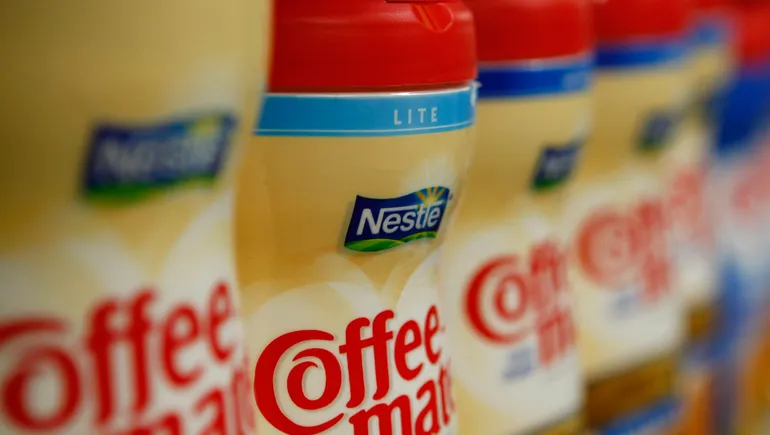Why weight loss drugs may impact coffee, soft drink makers the most

Do coffee and Wegovy mix?
That is on the minds of coffee brand executives as increasingly popular GLP-1 diabetes and weight-loss drugs curb some users’ cravings for coffee and other beverages.
While there have been shifts in consumption patterns among people taking the drugs, executives at some major CPGs say their companies have been impervious to penetration. But Lars Fruergaard Jorgensen, CEO of Ozempic and Wegovy maker Novo Nordisk, told Bloomberg that food company executives are asking him for advice.
“A couple of CEOs from, say, food companies, have been calling me,” Jorgensen told Bloomberg. “They are scared about it.”
Coffee
According to a study by global asset-management firm Bernstein of how diabetes and weight loss drugs impact food and drink consumption, “24% of daily coffee drinkers say they now drink less since using a GLP-1.”
One company at particular risk, per the investment adviser, is Nestlé, a leader in the coffee segment. The food and beverage giant derives 7% of its sales from Nespresso and its other brands.
But Nestlé CEO Mark Schneider assured investors in a December LinkedIn post that the company has not “seen evidence that GLP-1 patients have a reduced appetite for coffee.”
Bernstein cited two mitigating factors for Nestlé: obesity rates are more prevalent among lower-income households and Nespresso coffee is premium with premium prices; and Nestle has a broad portfolio with “GLP-1 resistant categories,” such as pet food and medicine.

Optional Caption
Scott Olson via Getty Images
Soft Drinks
Soda consumption has also changed for users of semaglutide, the active ingredient in Wegovy and Ozempic.
Among daily drinkers of full-calorie soda, Bernstein found 33% of GLP-1 users have “quit sugary soda entirely, while another third decreased consumption. For respondents who drank soda at least three times a week before taking GLP-1 drugs, the results were more dramatic; “as many as 77% reported to have decreased consumption or quit entirely.”
Unsurprisingly, among daily drinkers of zero-calorie soda, only 9% quit and 30% cut down on consumption.
The weight-loss drugs are no rival for beverage giant Coca-Cola, per CFO John Murphy, as 68% of the CPG’s portfolio already has low or no calories. “We are well positioned to provide choice and to provide options for people’s respective motivations and needs,” he noted, on the company’s earnings call in October.
PepsiCo CEO Ramon Laguarta has also dismissed the idea that GLP-1 drugs have slowed demand for the company’s drinks, as has Keurig Dr Pepper CEO Bob Gamgort.
Booze
Alcohol consumption has been impacted by GLP-1 usage for weight loss, surveys and studies have found.
“Early trends indicate that GLP-1 households are pulling back on food and alcohol purchases more significantly than households without GLP-1 users, particularly those with individuals using GLP-1 drugs for weight loss,” according to Numerator, which provides market intelligence services.
Sending on alcoholic beverages decreased for all households between Jan. 1, 2023 and Sept. 30, 2023 compared to the year-earlier period, Numerator found in a survey, but decreased most dramatically in households in which someone was using GLP-1 drugs for weight loss. Non-users spent 9.3% less YOY; GLP-1 households spent 11.2% less; GLP-1 diabetes users spent 5% less; and GLP-1 weight lost users spent 14.5% less.
AB InBev CEO Michel Doukeris, claimed the drug no impact on his business, during his company’s earnings call in October.
Meanwhile, among mostly beer and spirits drinkers, the Bernstein study determined, “over half of respondents have reduced or stopped their consumption.”
Some recent reports suggest that weight loss drugs may treat addiction to substances like alcohol and caffeine.
A study published in eBioMedicine determined that semaglutide reduces alcohol intake and relapse-like drinking in rats.
As far as Doukeris is concerned, it’s “too early to assess any overlap or change in behavior in relevant consumer groups.”
Source: fooddive.com

